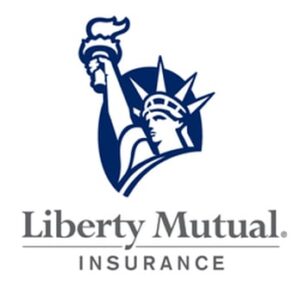Education Insurance
Choose Education Insurance to Protect Your Teaching Career
Protect your school and its students with comprehensive education insurance coverage
Education insurance, also known as school insurance, is a specialized coverage designed to protect educational facilities such as schools, colleges, and universities. This insurance encompasses a range of policies tailored to address the unique risks faced by educational institutions. It typically includes coverage for property and assets, liability protection against accidents or injuries on school premises, and coverage for educators and staff. School insurance can also offer coverage for events like natural disasters, vandalism, cyberattacks, and student-related incidents. It plays a vital role in ensuring that educational institutions can provide a safe and secure learning environment for students while safeguarding their financial stability in the face of unexpected challenges.
Why is education insurance important?
Education insurance is crucial for several reasons, as it serves to protect educational institutions, their students, staff, and assets from various risks and uncertainties. Here’s why school insurance is important:
Liability Protection: Educational institutions can be held liable for accidents, injuries, or property damage that occur on their premises. School insurance provides liability coverage, ensuring that the institution can handle legal expenses, medical bills, and potential settlements or judgments resulting from such incidents.
Property Protection: Schools often have significant physical assets, including buildings, equipment, and technology. Insurance safeguards these assets against risks like fires, natural disasters, theft, and vandalism, helping to cover the cost of repairs or replacements.
Student and Staff Welfare: School insurance can extend to provide coverage for students, faculty, and staff. This includes coverage for student accidents, medical expenses, and educators’ liability. It ensures that students and staff are well-cared for in case of injuries or accidents.
Cybersecurity: With the increasing reliance on technology in education, schools face cyber threats and data breaches. Cyber insurance can help mitigate the financial and reputational damage associated with these risks, covering data recovery, notification costs, and legal expenses.
Natural Disasters: Educational institutions are vulnerable to natural disasters like earthquakes, floods, and hurricanes. School insurance helps mitigate the financial impact of such events, enabling the institution to rebuild and continue operations.
Business Interruption: In the event of a covered loss, such as a fire or natural disaster, business interruption insurance provides financial support to help the school maintain its operations and recover lost income during downtime.
Regulatory Compliance: In many jurisdictions, schools are required to have certain types of insurance to operate legally. Non-compliance can result in fines and legal penalties.
Financial Stability: Unexpected events can strain a school’s budget. Insurance provides financial stability, ensuring that the institution can manage unforeseen costs without depleting its resources or affecting its educational programs.
Parental Confidence: Having insurance demonstrates that a school is proactive in managing risks and ensuring the safety of its students and staff. This can enhance parental confidence in the institution.
Continuity of Education: With the financial protection offered by insurance, schools can recover quickly from disruptive events, minimizing the interruption to educational programs and ensuring students receive uninterrupted learning opportunities.
Commercial Insurance Quote
Safeguarding your school against legal suits
Safeguarding your school against legal suits is a crucial aspect of risk management for educational institutions. Here are some steps and strategies to help protect your school from potential legal liabilities:
Compliance with Regulations: Ensure strict compliance with all local, state, and federal laws and regulations governing education, safety, and student welfare. Stay up-to-date with any changes in legislation that may affect your school.
Implement Safety Measures: Create and enforce safety protocols to prevent accidents and injuries on school premises. Regularly inspect facilities, address safety hazards promptly, and train staff on safety procedures.
Professional Development: Invest in ongoing professional development and training for your staff, including teachers, administrators, and support personnel. Properly trained staff are less likely to make errors that could lead to legal liabilities.
Student and Employee Handbooks: Develop comprehensive student and employee handbooks that clearly outline rules, expectations, and procedures. These handbooks can serve as a reference in case of disputes and help demonstrate your commitment to providing a safe and respectful environment.
Proper Documentation: Maintain accurate records of all school activities, incidents, and communication. Proper documentation can be invaluable in defending against legal claims.
Insurance Coverage: Secure appropriate insurance coverage, including general liability, professional liability, and property insurance. Consider additional coverage, such as cyber liability insurance, if your school handles sensitive data electronically.
Risk Assessment: Conduct regular risk assessments to identify potential liabilities and take proactive steps to mitigate them. Address issues like bullying prevention, discrimination, and harassment with strong policies and programs.
Legal Counsel: Establish a relationship with legal counsel experienced in education law. Consult with legal experts to ensure that your policies and practices are legally sound and in compliance with relevant laws.
Parent and Community Engagement: Foster open and transparent communication with parents, students, and the community. Keep stakeholders informed about school policies, initiatives, and safety measures.
Crisis Response Plan: Develop a comprehensive crisis response plan that outlines how your school will address emergencies and crises, including communication strategies and post-incident support for students and staff.
Background Checks: Conduct thorough background checks on all employees and volunteers who work with students to prevent potential risks.
Training on Reporting: Educate staff, especially mandatory reporters, on how to recognize and report suspected child abuse, neglect, or other concerning behaviors promptly.
Legal Review of Contracts: Have legal experts review and negotiate contracts with vendors, contractors, and service providers to ensure that your school’s interests are protected.
Parental Consent and Waivers: When appropriate, obtain parental consent and waivers for activities and programs that involve some level of risk, and ensure that they are well-informed about potential hazards.
Regular Reviews and Updates: Continuously review and update your school’s policies, procedures, and safety measures to adapt to changing circumstances and emerging legal issues.
By proactively addressing potential legal liabilities and implementing a robust risk management strategy, you can better protect your school from legal suits and create a safer and more supportive environment for students and staff.

As an educational institution, protecting your school with an insurance policy is crucial.
Reach out to us for a personalized consultation and explore the coverage options that suit your specific needs.
Companies We Work With






















